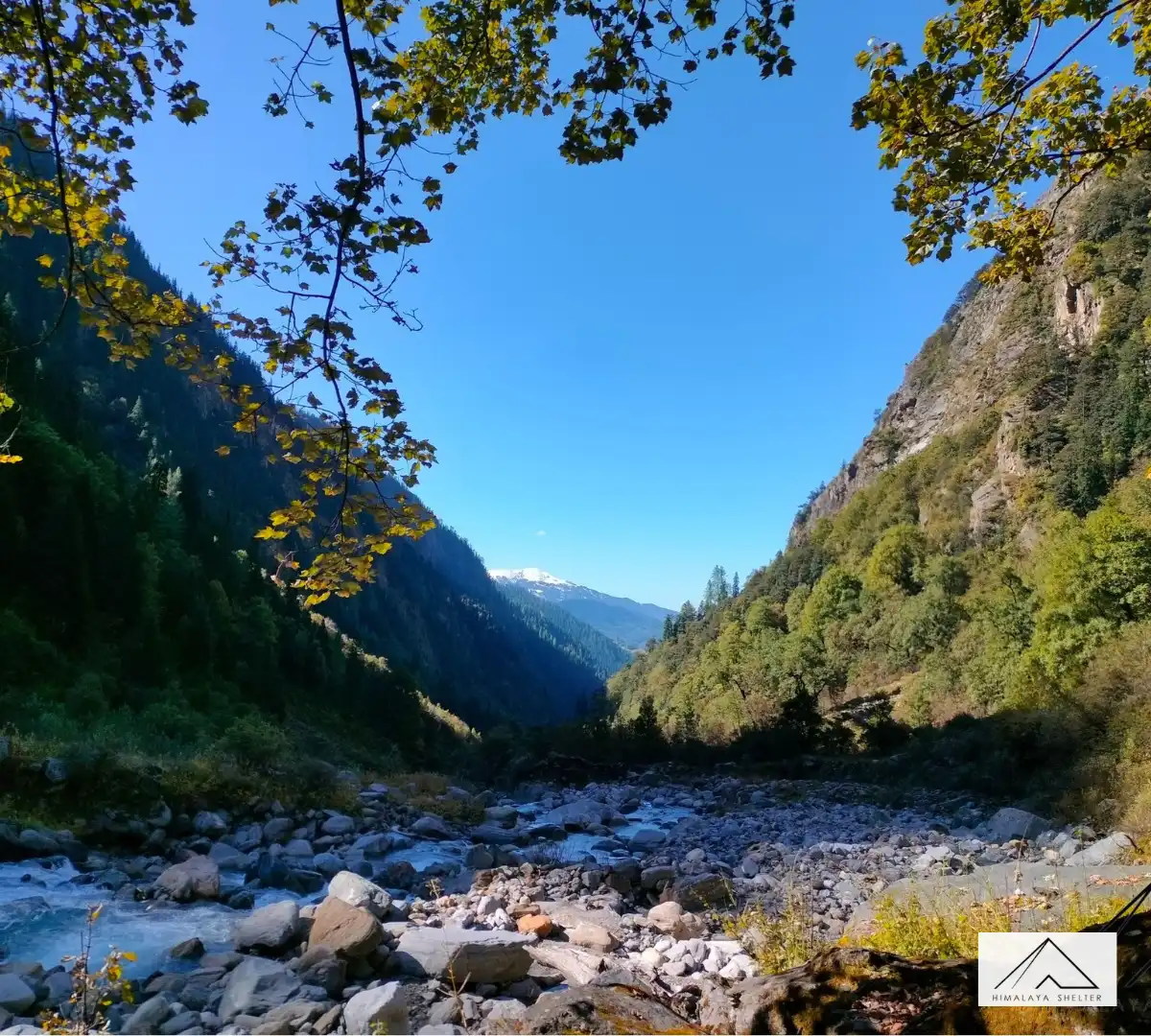Drive: 190 km, 8-9 hrs
Altitude: 2,100 ft (640 m) – 6,725 ft (2,049 m)
Accommodation: Himalaya Shelter Guest House
Meals: Dinner
We start the journey early from Dehradun and drive initially to the famous hill station of Mussoorie. After just over 100 km, we pass close to the temple of Lakhamandal. According to locals, Duryodhana of the epic Mahabharata conspired to burn the Lakshagriha house of the Pandavas in this area. Damta, Purola, Mori and Netwar are some of the other villages on the route. We follow the river Yamuna Naugaon and accompanies us till Purola. Purola is the last big settlement on the route with a large market. So, it is recommended that the trekkers can buy anything they might have missed out by Purola itself. It also is the last village where most of the mobile networks work.
The drive after Purola is through a beautiful forest of pine trees. In some distance, on top of a hill we can see the Jawahar Navodaya Vidyalaya overlooking the valley. From near the village of Mori, the river Netwar. The fall in temperature can be felt from here. We officially enter Govind Pashu Vihar Wildlife Sanctuary after we cross a check post at Netwar. It can be considered the southern gateway to the sanctuary as most of the treks across the region are accessed from here onwards. The northern border of the sanctuary merges into Himachal Pradesh. Close to here, the rivers of Rupin and Supin merge to form Tons, which is the largest tributary of Yamuna and in fact larger than Yamuna itself, in terms of volume of flow. The peak of Kedarkantha can be seen from various points along the way from here.
We reach Sankri by early evening. It is a small village with a central market lined with a few shops. The village has numerous apple orchards which are harvested starting from late summer. The market area is new compared to the old village area, a part of which is known as ‘Saud’. The village also produces peach, apricots and potatoes. One can see the Swargarohini peak from here on a clear day. We rest at night in a guest house or in camps.































